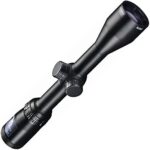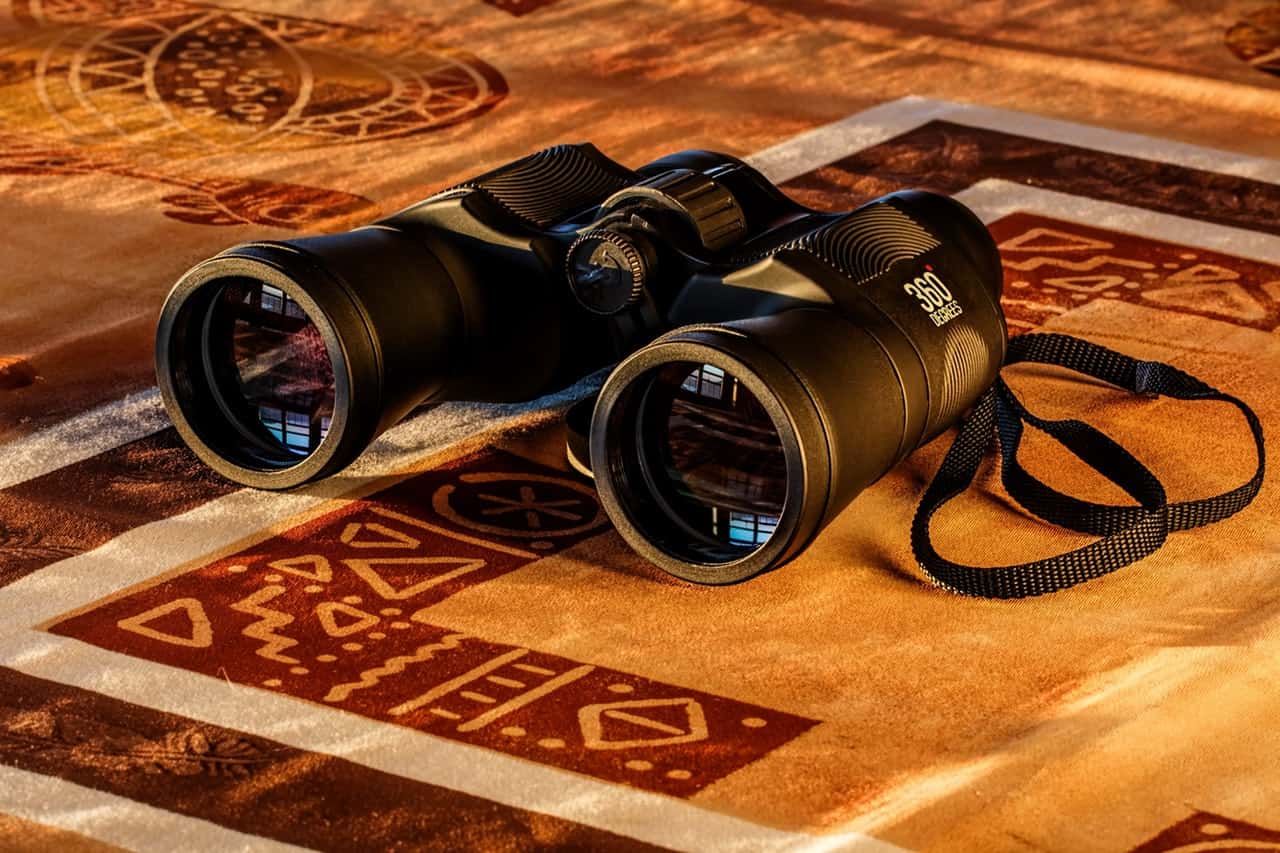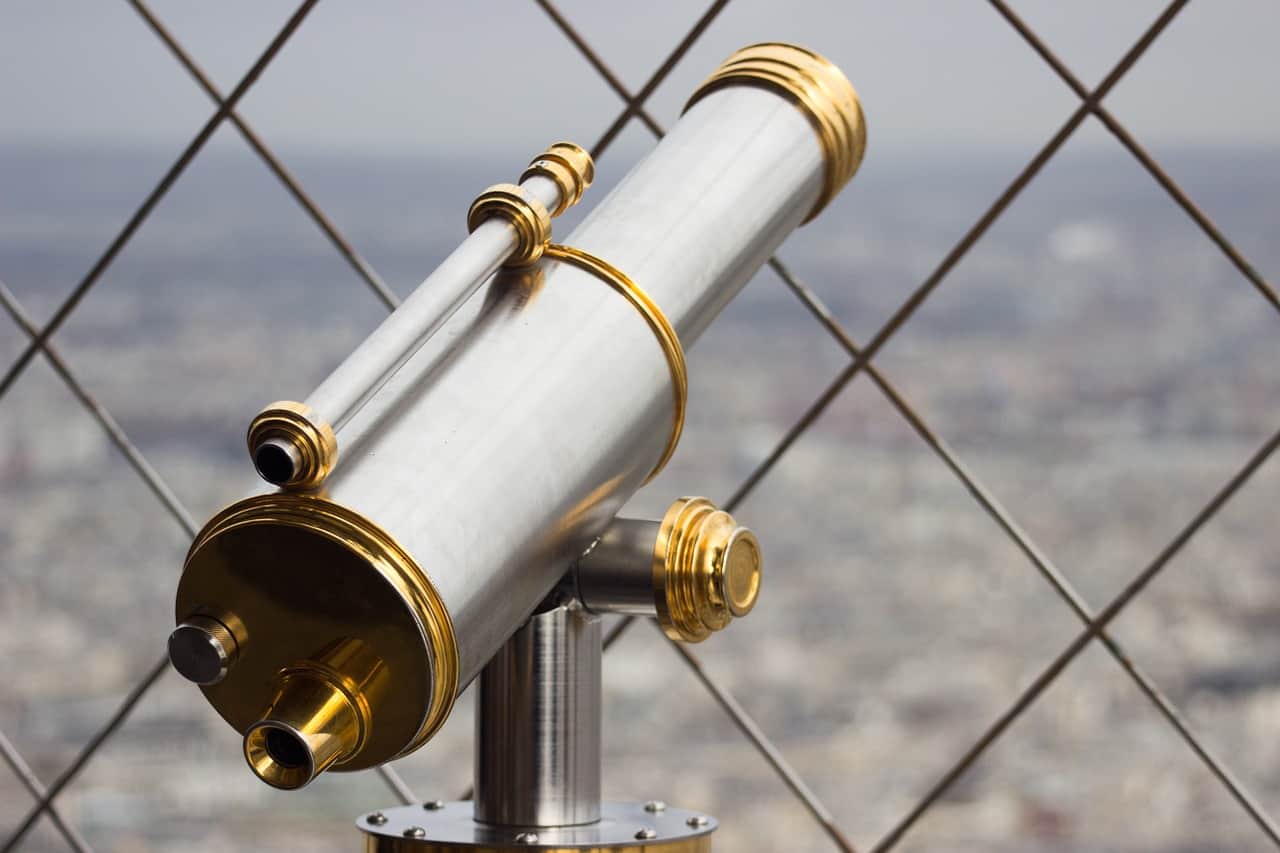Most of us know what binoculars are and what purpose they serve? Even if you don’t own a pair of binocs, you will still recognize it when you see one.
But the main question here is what are the different types of binoculars present in the market? This is an important question because the type of binoculars determines a number of things.
If you are on the hunt for a good pair of optics then it is rather crucial for you to know the types of binoculars available. You cannot just go and buy any bino because how and where you are going to use them is an important aspect to consider.
After reading this guide, you will come to know about different types of binoculars and their uses. And why they are crucial when buying binoculars?
Different Types of Binoculars Based on Design
#1 Galilean Binoculars
One of the earliest type of optics most commonly used is Galilean design. The name is based on the Italian astronomer Galileo Galilei Who first used this concept in the 17th century.
The Galilean design combines convex objective and concaves eyepiece lens which helps to provide an erect image. Although the disadvantage of this type of design is that the field of view is very limited.
Read: The ultimate beginners guide to choosing & buying binoculars (with infographic)
What is a Concave Lens?
Categorically speaking, the concave is something that is thin in middle with edges being thicker. Most concave lenses are used in car side mirrors and in glasses.
Lenses are a bit arched pieces of glass shaped like lentils. That’s where the name lens comes from in the Latin language. When the light travels in the air and hit the glass lens, they bend down and the rays adjust according to the lens shape.
Let’s say if the concave lens is used then light will spread out shooting like fireworks. The light will diverge in all directions that’s why it is also called a diverging lens.
The most common use of the concave lens is in a movie projector so that the projector can cover the maximum area.

What is a Convex Lens?
Another type of lens is called a convex lens. Convex refers to a glass surface that is thicker in middle than the edges. When light enters the convex lens, it converges towards the middle as if being swallowed in.
That’s why the convex lens is also referred to as a converging lens because it concentrates light rays in the middle. The converging lens brings a distant object into focus and that’s why are ideally used for a magnifying purposes like magnifying glasses and telescopes.
From the magnification aspect, a Galilean design is not very promising and only provides up to 4x magnification. That is the reason it is commonly used in opera glasses and cheap toys.
#2 Prism Binoculars
Unlike Galilean design in which no prism is involved, prism binoculars have become standard now. In order to understand how prism binoculars works you first need to know what actually is a prism?
What is Prism?
In the optical field, a prism is a transparent optical element made of glass or plastic whose ends are identical and creates an acute angle.
The main purpose of using a prism in binoculars is to erect the image right way up. Without prisms, the image received by the lens is facing downwards and backwards. That’s why they are also referred to as erecting prisms.
There are two different types of prism used in modern binoculars and both designs have their own pros and cons.
#3 Porro Prism Binoculars
Porro prism binoculars are standard binoculars that we see in most movies. They are fairly easy to recognize because of their classic design which features wide joint between the objective lenses.
Italian optician Ignazio Porro utilized this prism image erecting system in 1854. Therefore it is named after him. An optical pathway between lenses is bent like letter Z which results in bulky and wider binoculars.
Porro prism binoculars are usually cheaper but provide great image quality. You would want to consider them if you prefer watching natural scenery from your balcony or while vacationing.
Keep in mind that they are not very durable and lenses can get damaged easily. You have to careful when transporting them because they do not fare well in rough and tough conditions.

#4 Roof Prism Binoculars
Roof prism binoculars are more complicated and updated compared to Porro prism binoculars. Roof prism in binoculars was first used in the 1880s by Frenchman Achille Victor Emile Daubreese.
The optical pathway of the roof prism is narrower and straight compared to Porro prism. This is the reason for the compactness of roof prism binoculars than Porro prism binoculars.
You can recognize roof prism binoculars by their design mainly. The hinge between the objective lens is narrower because of straight optical tubes. The lens used in Porro prism is of greater quality and complexity which results in a sharper and crisp picture.
Porro Prism Binoculars vs Roof Prism Binoculars
Apart from greater quality and higher price range, roof prism and Porro prism binoculars can be distinguished based on some other factors.
I am going to compare the two models so you can conveniently decide which one is best suitable for your outdoor shenanigans.
#1 Water-tight
Roof prism binoculars are more watertight than Porro prims because the lens in roof prism requires top quality watertight coating. Porro prisms are usually not watertight and even if some models are labelled water resistant, do not get confused.
Because water resistant does not means that it can be used in water or rain without any worry. At best water resistant means that you can use them in drizzle or light rain.
So the end note here is that if you are going to expose your binocs to elements of nature and particularly water than you shall invest in roof prism binoculars.
#2 Portability
Porro prism produces bulkier binoculars which are harder to move and you would most probably need a tripod to use them. They are not very easy to carry around and often causes strain on your muscles.
On the other hand rood prism binoculars because of their compact and travel-friendly design are more convenient to be tossed around in your backpack.
They are easier to carry around and you can even strap them around your neck and enjoy your hunting trip without any hiccups.
#3 Durability
Manufacturing Roof prism is more complex and tough compared to Porro prism. Roof prism is relatively modern prism and the lens and prism to be used must of greater quality.
Because of extra care and dexterity involved in the making of roof prism binoculars, the end result is of high quality. Roof prism is far more durable than Porro prism.
If you are an extensive user of binocs and travel frequently than investing in roof prism optics is in your best interest. A good pair of roof prism binocs will last you a lifetime.
#4 Cheap vs Expensive Binoculars
Roof prism. Is far more expensive than Porro prism. You can get a good Porro prism optics in $100 while the price of roof prism usually starts from $700 and can go up to $3000.
That is one hell of a price tag for a binocular but it all depends on your preference and budget. You just need to be sure if investing such a huge amount is worth the money.
Roof prism binocs are usually one-time investment and will last you really long time which is an important fact to ponder upon.
#5 Great Image Quality
Usually, hunters or bird watchers like to invest in roof prism binoculars because the field of view and magnification is better than Porro prism.
If you are on a hunting trip that you want to spot your game clearly even if it is far away. Moreover, you don’t want a pair of binoculars that will cause you eye fatigue and headache.
With roof prism binoculars image quality, as well as eye fatigue, will not be an issue. Most cheap Porro prism binoculars do have this downside.
Conclusion
I will suggest you do your research before making the decision. You have to weigh the pros and cons of each type.
For recreational use, Porro prism is considered best. If you are an avid sports fan and want to watch your favourite sports event in a stadium than go for Porro prism optics.
Other uses of Porro prism binocs includes musical concerts. Nature lovers can also enjoy beautiful sceneries from their balcony while relaxing on vacation.
For extensive use, hunting and birdwatching roof prism might be your best option. Marines also prefers using roof prism binocs while on water because of their waterproof design and steadier image quality when the boat is moving.
I hope that after reading this guide you can now easily determine what are the different types of binoculars?

An optics enthusiast – I love bird watching as well as wildlife. Originally from South Africa, I moved to the UK at a young age. I love reviewing the latest binoculars as well as traveling. I work as a comms consultant during the day. My plan is to travel across the world so building up to that goal.






